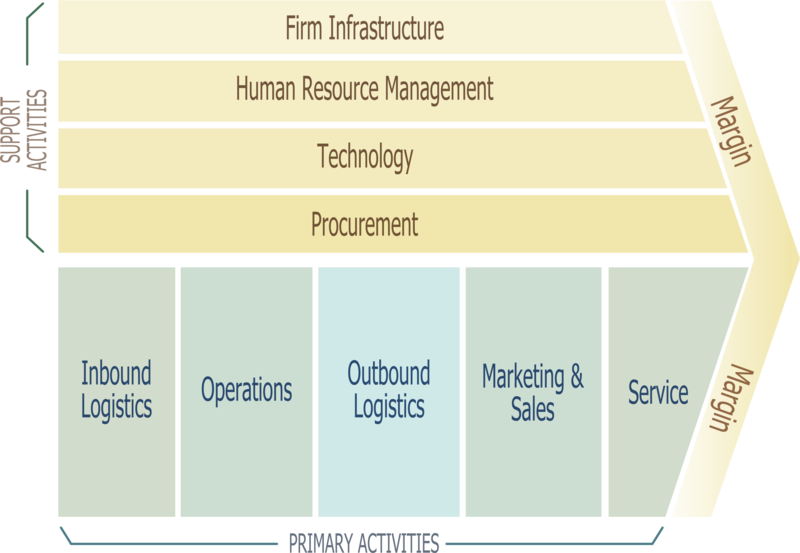 Image via Wikipedia
Image via Wikipedia
Business processes, business technology, online marketing. I am Phil Ayres, 20 years in enterprise software and business improvement. And blogging on and off since 2006.
 Image via Wikipedia
Image via Wikipedia
 Image via Wikipedia
Image via Wikipedia Image via Wikipedia
Image via Wikipedia
A question from this blog, What's Better - Building a BPM Solution or Buying One? and an important question for companies looking to take the BPM leap. And what metrics should they use to make the decision?
 Image via Wikipedia
Image via Wikipedia
 Image via WikipediaBusiness process improvement is fundamental to the best performing companies, although we rarely hear or talk about it. Instead we focus on how great the employees are, how they are trained to deliver great customer service, and how well their leaders inspire their people work better. Maybe it is because consumers of services are human-beings that we focus on the people part so much. Or maybe it is because so much of the focus of business process improvement has been in the mechanization, automation and general dehumanization of business processes that we have become immune to its benefits. Business processes are seen as tools that should just work, when we should be looking at them as better systems that involve talented people.
Image via WikipediaBusiness process improvement is fundamental to the best performing companies, although we rarely hear or talk about it. Instead we focus on how great the employees are, how they are trained to deliver great customer service, and how well their leaders inspire their people work better. Maybe it is because consumers of services are human-beings that we focus on the people part so much. Or maybe it is because so much of the focus of business process improvement has been in the mechanization, automation and general dehumanization of business processes that we have become immune to its benefits. Business processes are seen as tools that should just work, when we should be looking at them as better systems that involve talented people. Most new software system implementations require people to be trained or re-trained; they have to understand why the new way of doing things is better, how it will make them more productive, how it affects the bottom-line. [...]
Yes, BPM can work, it does work, but it’s necessary to recognise the other associated costs especially with human capital.
If we wanted to organize our kitchen to maximize space, we would never do things like store empty pots and pans or glasses in one place and disposable boxes of dry goods in another…we’d dump the dry goods into those empty pots, pans, and glasses and toss the disposable boxes they came in–et voila: maximized space!
 |
| Porter Value Chain (from Wikipedia) |
So much has been written about efficiency in manufacturing that its is time for the masses of us office-bound companies to get a look in. A production line in a manufacturing company works so well to improve efficiency of building widgets because it constrains the way the half-completed widgets move, who gets them next and what they do with them. In the back offices of companies, things aren't so easy, so it can be hard to see why there is lots of activity with minimal productivity.Take a read of the rest of the article to find out how I think that simpler online / SaaS solutions may often be better than complex and expensive enterprise software, even for the big enterprises that can afford it. This is just part of my white paper for rapid process improvement: Seven Steps to Escaping Process Chaos.
Ian Gotts of Nimus: "The two are inextricably linked already. If I want to perform some task such as sign off a PO then I probably need to access the Purchase Policy document which will be part of ECM."
Malcolm Ross of Appian: "There's a definite need to unite the features of these two worlds to create more powerful content and process systems."
Doug Mow of Virtusa: "From the customer, patient, subscriber or end user perspective I want a seamless UI that doesn't distinguish between any class of functions. "
Brian Reale of ProcessMaker: "It is one thing to route a document or a PO, add a signature, and then store it in a DMS. It is another thing to start a process in a rich contextual environment and have that environment intelligently populate with the pertinent information based on attributes like user, place, time, and company policies. "
Peter Evans-Greenwood: What's a document/record anyway? A page in a wiki? An email? SMS? A tweet? Defining the scope of BPM and ECM as processes and documents ignores the ongoing erosion of boundaries between organisations and communications channels, and existing solutions are too intrusive to push into these new channels.
The short answer is this: in any business that uses BPM in critical applications, BPM is already integrated with ECM. I think it unlikely that we'll see anyone but IBM and maybe EMC really producing a credible E-BP-CM suite.
Why do I believe this? Well, its important to ask why ECM is so important to businesses... Its not the collaborative-Sharepoint-less, "let's be happy and work together" stuff. Its the fact that in real business, at the end of everything we do in a business process there needs to a record of the transaction, the decisions or whatever that formed the outcome. Of course, that does not need ECM if the data we were work with at every step was fully structured (an online form producing structured database records). But for the real world, documents do exist, and ECM provides a way to handle them.
As Doug says we must interact with documents, and as the vendors hinted, document management ain't that hard for BPM vendors. The problem is that throughout a process, documents will form part of the final business record. BPM vendors rarely manage to focus on understanding the complexities of electronic document and records management, therefore they rarely do much more than routing documents -- plain old-fashioned 'imaging and workflow'.
What is really needed from BPM is a final step: registering the records and the decisions of the process in the corporate records management system, keeping the context of everything that was done. Working with documents and process context appears in some of the marketing around case management. Though more often than not people get more excited about how processes can change dynamically, than how they can be recorded permanently. So I expect adaptive case management (ACM) to be another missed opportunity.
It really is a shame that records management has such a 'stodgy' appearance, since it is such an important part of business processes.
Managing my own knowledge work. As I wrote my own Adaptive Case Management system for my own knowledge work, I was able to organize my own work. As the number of cases increase – 3000 now including sub-cases – I become aware of patterns.
Feedback from my first pilot. This was very interesting, because the main focus for my pilot is usability. Usability is strongly interwoven with these patterns of knowledge work.
The things I always wanted to model, but never was able to. I governed the modeling of thousands of models of structured processes from all areas of business processes. But because the modeling language was only able to model predictable processes, I never was able to model unpredictable processes.
Unfortunately this 'fun' discussion wasn't as a result of something I blogged, but its worth a look. According to Adam Deane:
My view is that Case Management should be implemented by ECM vendors, not BPM vendors.
Case Management revolves around data, documents and data therefore should be dealt by ECM professionals.
ECM requires a different set of skills than BPM.
It would be in the customer’s best interests to have separate systems for BPM and ECM.
I personally believe that it doesn't matter where Case Management sits. Its the business value that this type of solution can bring to businesses that is important. And until my business, or somebody else's is as synonymous with the that specific category of solution as SAP is with ERP, we all need to just accept that the industry is a bunch of pigeon-holes.
Follow along with the comments on Adam Deane's blog. Its getting fun...
A post from the Improving It blog

I'm working on business process improvement with a client in a way that some people would consider to be 'backwards'. I'm not starting by obsessively picking at a business process being performed and constantly refining it so that it works better. I'm actually looking at all the records of transactions generated by the company, which are filed and stored off-site, and I'm working my way backwards into the business processes that created them. For me at least, this is a great way to approach things.
So many times, in business process improvement, especially when selling or implementing BPM software, we already have been told which business process we are working on. A client contact has already made a business case to fix up a specific part of a business process, as she owns the particular department affected by that piece of the puzzle. As much as BPM'ers love to believe they think holistically with end-to-end business processes, the reality of the situation is that they really are just rubbing ointment on a sore spot to take the pain away in that area. Less pain for their primary stakeholder signifies success for the BPM solution, and everybody is happy - except for the fact that the organization as a whole is suffering.
My current backwards view of an organization is turning out to show a stunning landscape of interrelated business processes and information. At this point I'm not talking about 'enterprise architecture'. Oh no, nothing that technical yet. From looking at all the printed reports, paper forms, photocopied documents, Excel spreadsheet and printed then scanned emails, I'm seeing an amazing interconnectedness of activities that is hard to get at when you look at a process as just a series of tasks to be performed.
Now that I've convinced myself that the organization is like one living organism and Mother Nature has overtaken my client, how does that help me actually make things better? Well, there are two approaches to mapping out the way to take process improvement: I can ignore this new view and select a business process that appeals, starting to fix it up, digging in from the 'request' in my diagram; or I can follow the paper trail backwards, from the final result of all the work that is going on (the record), back through all the high-level activities that produced the result.
What I'm finding is that by working backwards, I'm getting a clearer picture of the best-practice straight-line business processes I'm hoping to nurture than working start-to-finish. By working from the absolute end result of the process, which is the records to be kept that are evidence of a successful transaction, I can track back through all the activities that were performed to get there. For a start this allows me to discard the waste output that is often filed because nobody really knows if they can throw it away. More importantly, working backwards tends to hide the rat-holes, exceptions and distractions that typically appear from working the other direction (the benefit of hindsight?), allowing me to see what I really need: what a successful, streamlined business process is supposed to look like within the context of the whole organization. I can then use that information to select the most valuable business processes to focus on fixing, while already having a great view of how they should work.
I like this approach to starting a business process improvement project, although I know I'm going to have to avoid confusing my client with what appears to them to be an ass-backwards view of the world.
A post from the Improving It blog
In technology many of us are comfortable voicing opinions about what is good, and what is not, without any practical experience. I'm as guilty as anybody. After all, you just can't touch and play with everything that exists (some of its just way beyond the prod and play level of trial and error attempted my mere mortals). But the cloud is a different matter. It is a whole mass of technology and unconventional (for software) business models that us mere mortals can touch and hopefully understand. So why was I still talking about it without truly experiencing it?
Last week, I kicked off a new program for developers who wanted a nice platform on which to build those killer business applications that they had been struggling with for so long. The Consected API was born -- or at least conceived, since its still a way from being much more than a glint in a developer's eye. So what better opportunity did I have than to put together a new environment for my little developer community than in the cloud? None really, so I bit the bullet, pulled out my credit card, and signed up for the Rackspace Cloud. Yes, the kings of server hosting, with the tag line for their level of customer service service being 'Fanatical Support' have a cloud offering. I'm pretty sure they bought the technology from somewhere, but if the hardware is supported according to Rackspace doctrine, then I'm sure I'll be in good hands.
So why Rackspace and not Amazon with its elastic compute cloud (EC2)? Because the name, the presentation of the service and some of the feedback I've been reading suggests that Amazon EC2 is way more techy than I want to be prodding and playing with while I have better things to be focusing on. Hell, it sounds like your servers can disappear at a moment's notice, reappearing elsewhere in the cloud without data or anything intact (OK, so I oversimplify), so you have to build your solution around the complexity of an underlying server that is so elastic it just rebounds to nothing, but can stretch to enormous if your processing demands. Nope, for me Rackspace offered a cloud solution I could get my head around. Its just like renting a space for a virtual machine, but the business model doesn't tie you to that space. You can shrink it to nothing, or grow it to, well frankly larger than I'm going to need.
The nicest thing for me is that I don't need to rebuild my applications to benefit from the flexibility of the cloud. I don't need specialized developer toolkits. I don't need the cloud API. There is a real operating system (of my choice) under the covers. I get full permissions to install the software I need on my virtual machine while its running, then generate an image of it online, redeploying if I screw something up, or making copies if I need new instances of that server. All from a simple web page in my private control panel. I own the spot I'm running my image on, until I choose to shrink it or grow it. Then the machine will be stored as a snapshot and moved to its new (larger or smaller) home in the cloud. No data lost. No difficult architectures. Just like clicking a button and having a virtual tech come and install more CPU, memory and hard-disk in your server. In under 10 minutes.
So, what is the Rackspace cloud? In my opinion its a different way of charging for a nice, large, well put together virtual machine environment, backed up with Rackspace's 'Fanatical Support'. I like it when some technology is as easy as you hoped it would be. In this case, it really seems to be.
A post from the Improving It blog